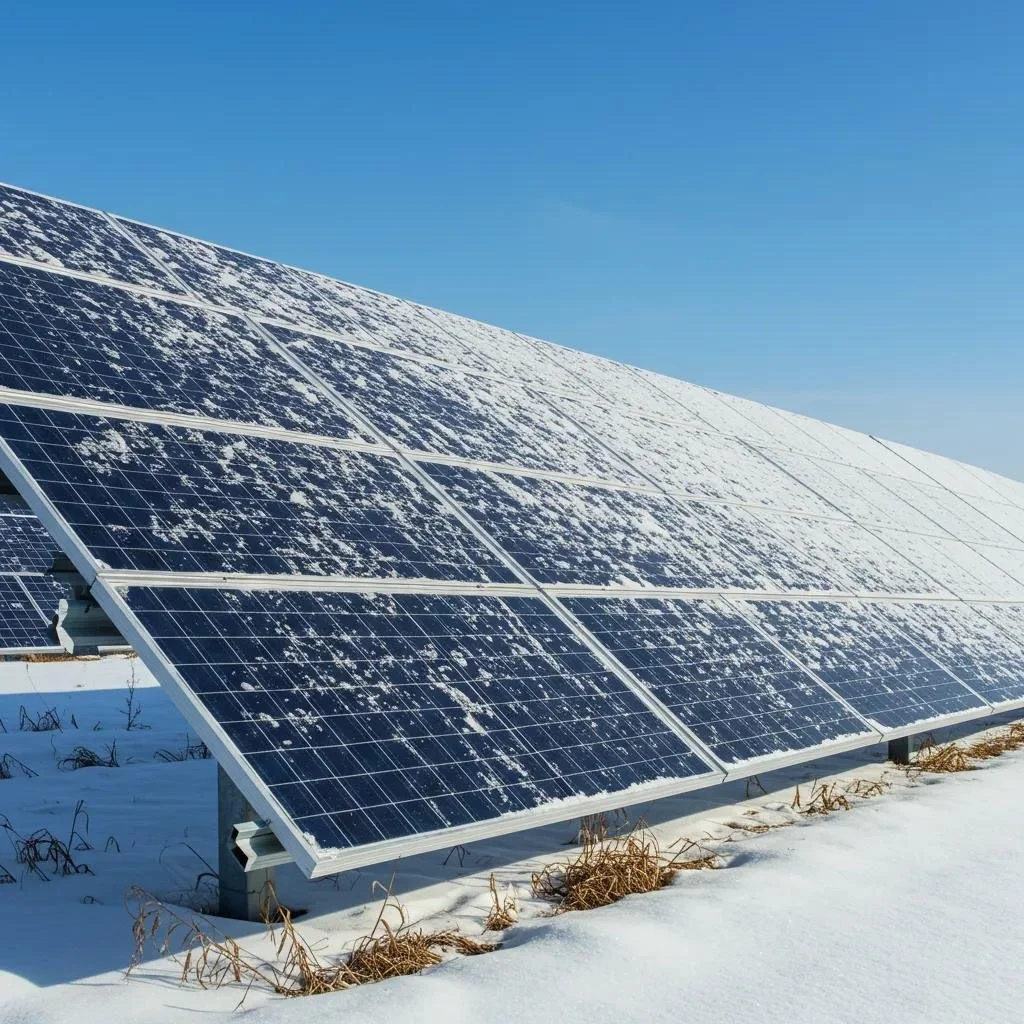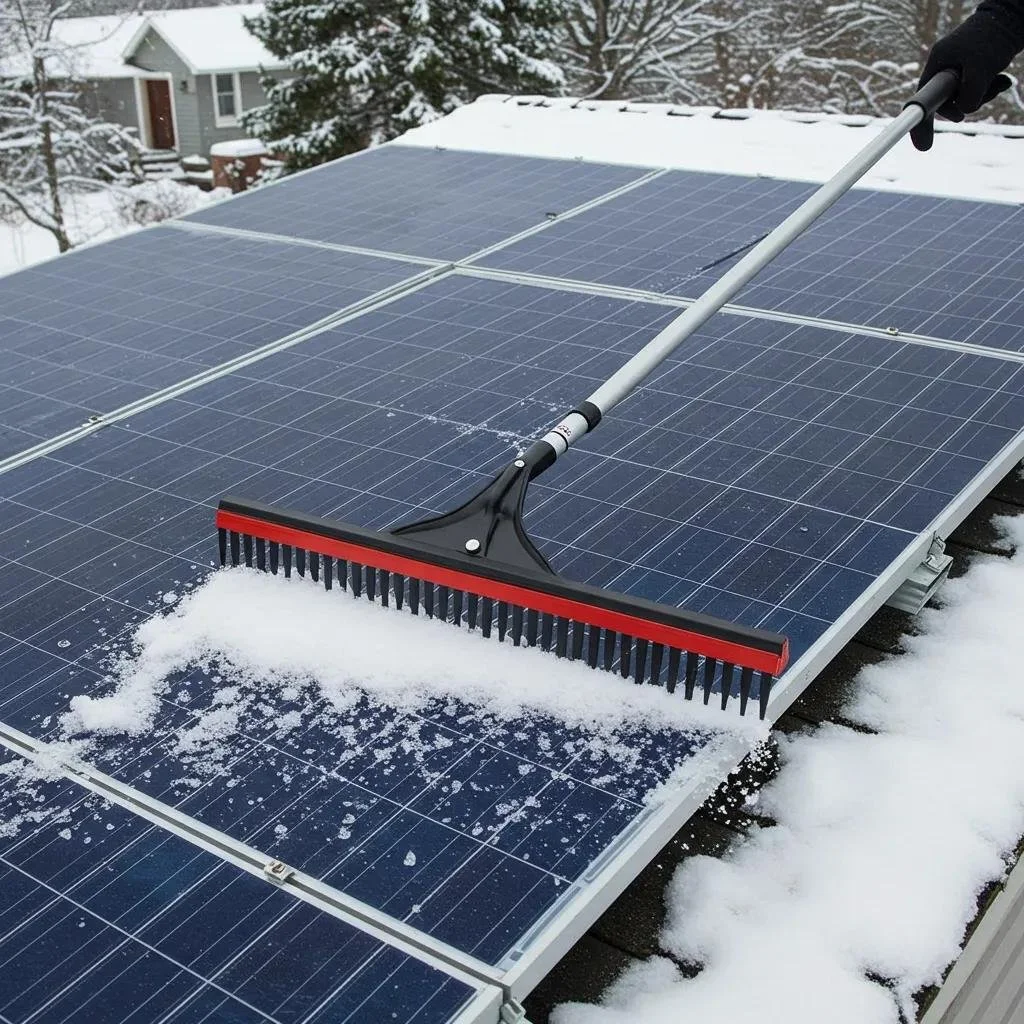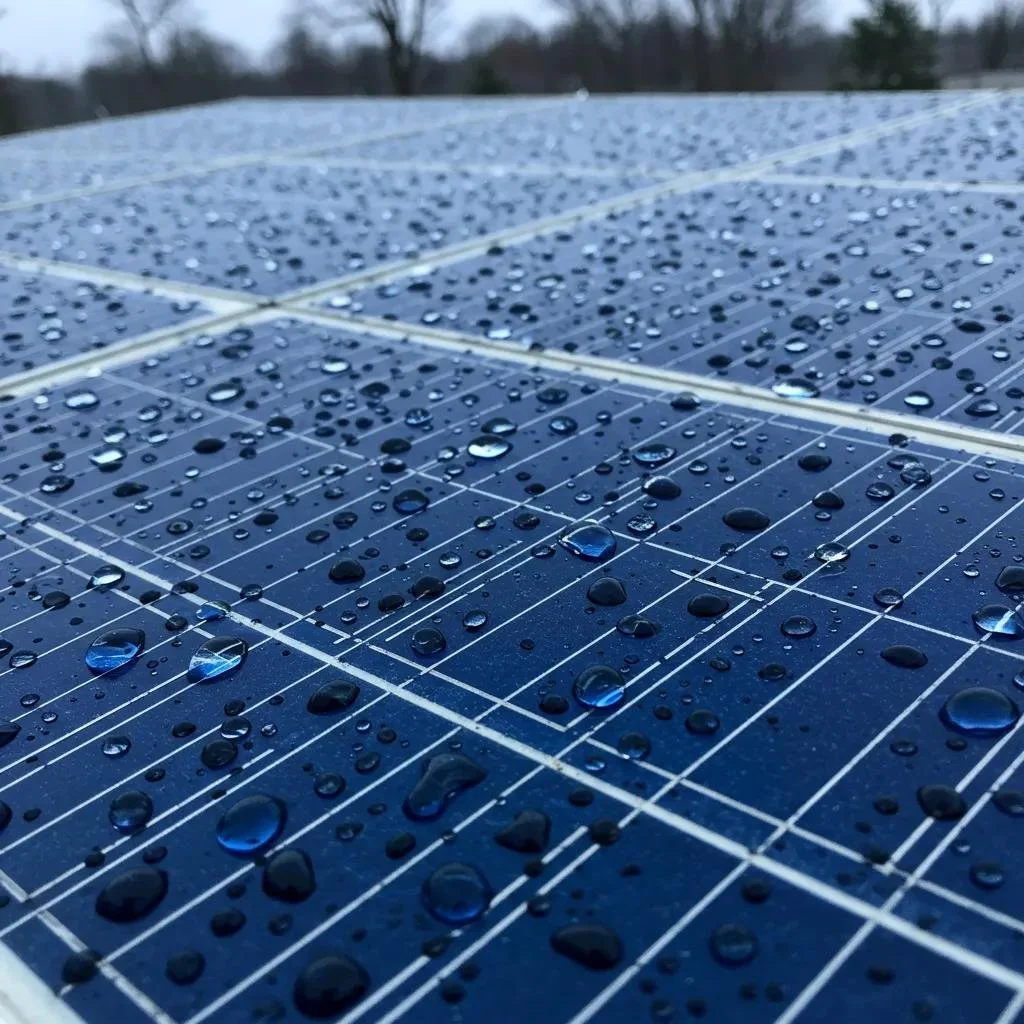Winterizing Your Solar Panels: Essential Tips for Cold Weather Performance
As winter approaches, snow and ice can significantly impact your solar energy production and potentially compromise the integrity of your photovoltaic panels. This guide will walk you through inspecting your panels before the first frost, safely clearing snow, preventing ice buildup, maintaining optimal efficiency during colder months, and knowing when to call in the pros. Our goal is to help you keep your system running smoothly and extend the life of your panels. You'll discover why winter prep is vital, get a detailed pre-winter inspection checklist, learn effective snow removal methods, explore ice prevention techniques, find strategies to maximize output in freezing temperatures, and understand the advantages of professional services like Pegasus Window Washing's specialized solar panel winter preparation and maintenance.
Why Is Winter Preparation Crucial for Your Solar Panels?
Getting your solar panels ready for winter involves proactively clearing snow, preventing ice from sticking, and ensuring they're positioned correctly. This not only keeps your energy production up but also shields your system from damage caused by freezing and thawing. While cold air can actually boost cell efficiency, snow cover and shorter days can cut your output by as much as 25 percent if your panels aren't maintained. Preparing your solar array before the harshest weather hits ensures consistent energy generation, prevents damage from heavy snow loads, and helps you avoid costly repairs down the line.
Proper winter upkeep also removes any debris that could scratch the glass under frost conditions, directly contributing to a longer operational life for your panels. Understanding how the seasons affect your system lays the groundwork for the inspections, cleaning, and professional support we'll cover in the following sections.
How Does Winter Weather Affect Solar Panel Efficiency?
While colder temperatures can actually improve how well your solar cells perform by reducing heat-related inefficiencies, your overall energy output often dips due to:
Snow piling up and blocking sunlight.
Ice layers acting as an insulator on the panel surface.
Lower sun angles reducing the amount of direct sunlight hitting each square meter.
Shorter daylight hours limiting the time available for energy generation.
Panels with just a thin layer of snow can lose up to 70 percent of their output, and heavy drifts can bring production to a complete halt. Clearing snow effectively and optimizing your panel's tilt can counteract these issues and get you back to peak performance.
What Are the Risks of Snow and Ice on Solar Panels?
Snow and ice pose two primary threats to your solar panels:
Physical Strain – Heavy, wet snow and ice can put significant weight on your panels, potentially causing the frames to warp or even creating tiny cracks in the cells themselves.
Surface Damage – If you try to scrape off ice or packed snow improperly, frozen debris can scratch the glass. This can lead to "hot spots" and reduce efficiency over time.
Left unchecked, ice buildup can also damage the mounting hardware and the insulation on your wiring, creating safety hazards and driving up repair expenses. Recognizing these potential dangers highlights just how important comprehensive winter care is.
How Does Proper Winter Maintenance Extend Solar Panel Lifespan?
Regular winter maintenance helps remove abrasive materials and prevents corrosion caused by freezing and thawing. This slows down the wear and tear on your frame seals and electrical connections. By clearing snow promptly and applying protective treatments to prevent ice, you reduce the stress from repeated temperature changes that can weaken materials over time. Well-maintained panels in harsh winter conditions can often last several years longer than those left unprotected, safeguarding your investment in clean energy.
Your Pre-Winter Solar Panel Inspection Checklist
A thorough pre-winter inspection is key to ensuring your solar panels are ready for freezing temperatures. This checklist helps you spot any wear and tear, wiring issues, or stability problems before they become serious. Here’s a step-by-step guide to essential inspection tasks, along with a table summarizing the criteria for each component.
Carefully check all electrical wiring and conduit for any signs of cracked insulation or exposed wires.
Make sure all racking bolts, clamps, and frame fasteners are securely tightened.
Inspect the panel glass for any chips, cracks, or surface crazing.
Clear away any leaves, dirt, or debris from the mounting rails and the panel surfaces.
Look for any new obstructions that might be shading your panels, such as tree branches or new roof vents.
Before you proceed, confirm that every item on this list meets the manufacturer's specifications and all safety standards.
| Component | Attribute Checked | Pass/Fail Criterion |
|---|---|---|
| Wiring | Insulation integrity | No frays, breaks, or exposed conductors |
| Mounting hardware | Fastener torque | All bolts tightened per specification |
| Glass surface | Damage inspection | Zero hairline cracks or chips visible |
| Debris clearance | Cleanliness level | No accumulations obstructing modules |
| Shading elements | Unobstructed exposure | Full sun path clear of obstacles |
This table will help you identify what needs attention and prepare you for safe cleaning and snow removal.
Which Components Need a Pre-Winter Check?
Before the cold weather hits, it’s crucial to inspect key components like the electrical wiring, frame mounts, junction boxes, glass surfaces, and the surrounding roof areas to ensure everything is in good condition. Each part plays a vital role in keeping your system safe and efficient:
Check electrical junctions for any signs of moisture getting inside.
Inspect racking rails for rust or if they feel loose.
Look closely at the glass for tiny fractures that could trap moisture.
Clear out any debris that might be collecting in gutters around the panels.
Verify that the roof flashing seals near the panel edges are intact.
Catching any weaknesses now can prevent system failures and help your panels last longer through the winter.
How to Spot Winter-Related Damage Early?
Keep an eye out for early warning signs of winter damage, such as fine cracks in the glass, mounting brackets that feel loose when the panels are under load, or discoloration around the cell connections that might indicate moisture getting in. Look for:
Tiny, web-like fractures near the corners of the glass.
Rust spots on the metal joints of the frames.
Water stains inside any sealed junction boxes.
Panels that wobble slightly when you gently press on them.
Unusual "hot spots" that your inverter's diagnostic system might report.
Identifying these issues before the heavy snow arrives can stop small problems from turning into expensive repairs.
When Should You Call a Professional for a Solar Panel Assessment?
It’s a good idea to schedule a professional assessment of your solar panels when temperatures consistently stay below freezing or after severe storms that bring heavy snow or ice. The best times to get this done are:
Late fall, before the first significant snowfall arrives.
Right after a major snow or ice event.
Once a year, as part of your regular preventative maintenance.
Anytime your own inspection reveals potential damage.
Bringing in certified technicians at these times ensures that any hidden issues are found and fixed by experts.
Safely Clearing Snow from Your Solar Panels
When clearing snow from your solar panels, use the right tools and techniques to avoid scratching the panels and ensure they can keep generating power. Always start from the ground using long-handled, non-abrasive tools, and make sure you have stable footing to prevent accidents. Let's look at the best tools to use and when it's time to call in the professionals.
What Are the Best Tools for Clearing Snow from Solar Panels?
Choosing the right tools is essential for preventing damage and staying safe. Here are some of the most effective snow-removal tools:
A roof rake with a soft, plastic head that allows you to gently pull snow off.
A telescoping snow brush for lightly sweeping away thin layers of snow at an angle.
A foam-edged squeegee to clear away light snow or slush.
Snow guards installed at the top of the panels to help manage sliding snow.
These tools make the job easier while protecting your panels and often reduce the need to climb ladders.
How Can Homeowners Clear Snow Without Damaging Panels?
Homeowners can safely clear snow from their panels by following these simple steps:
From ground level, use a soft-headed roof rake to gently pull the snow downward.
Use sweeping motions that run parallel to the panel's surface to avoid scratching the glass.
Never use metal shovels or scrapers, as these can easily chip the protective coating.
Work in sections, clearing snow gradually from the top row down.
If you must access the panels directly, wear slip-resistant footwear and ensure your ladder is placed securely.
Following these precautions will help maintain your panels' integrity and keep your energy production going.
When Is It Safer to Hire Professional Snow Removal Services?
It's time to call in the pros when:
Your roof's slope is too steep for safe DIY work (steeper than 30°).
The snow is heavy and packed, making it difficult to remove easily.
Your insurance policy requires certified technicians for coverage.
Your solar arrays are in a location that's hard to reach without special equipment.
Professional teams, like those at Pegasus Window Washing, come equipped with specialized lifts, trained crews, and liability insurance, ensuring the job is done completely and without risk to you.
Preventing Ice Damage on Solar Panels During Winter
Preventing ice buildup on your solar panels involves taking steps to stop the surface from freezing, which reduces weight stress and keeps the cells working properly even in subzero temperatures. Effective prevention combines smart design features with active measures to stop ice from forming or to remove it quickly when it does.
What Causes Ice Buildup on Solar Panels?
Ice typically forms when water melts on the warmer panel surface during the day and then refreezes overnight. This is often caused by:
Cycles of freezing and thawing, especially on partly cloudy days.
Panel tilt angles that are too low, causing water to pool on the glass.
Drainage channels around the panel frames that aren't working effectively.
Surface textures that give ice crystals something to grip onto.
Understanding these factors will help you choose the best strategies for preventing ice.
Which Anti-Icing Solutions Are Effective for Solar Panels?
| Solution | Mechanism | Benefit |
|---|---|---|
| Hydrophobic coating | Causes water to bead up and roll off, preventing ice from sticking | Can reduce how often ice refreezes by up to 60 percent |
| Electric heat strips | Gentle, low-voltage heat applied along the panel frame | Melts ice within minutes of being turned on |
| Snow guards | Create staggered points where snow can release | Helps prevent large, sudden slides of snow and ice |
These solutions can be integrated smoothly with your existing panel systems and minimize downtime caused by ice blockages.
How Does Proper Installation Help Resist Ice Damage?
Installing your panels at the recommended 30–35° tilt angle helps snow slide off more easily due to gravity and reduces water pooling. Using strong racking hardware with well-designed drainage paths prevents ice from getting underneath the frame. Ensuring that all fasteners are tightened to the manufacturer's specifications and using corrosion-resistant materials can significantly reduce stress from freezing and thawing, extending the life of your frames over many winters.
Maintaining Optimal Solar Panel Efficiency in Cold Weather
To keep your solar panels performing at their best during the winter months, you'll need to clean them regularly, adjust their tilt strategically, and monitor their output closely to adapt to seasonal changes. These steps work together to overcome the challenges posed by shorter days and lower sun angles.
How Does Cleaning Improve Solar Panel Performance in Winter?
Cleaning your panels removes dirt, pollen, and any lingering snow that can scatter sunlight and reduce the amount of light absorbed. Panels that are free of obstructions can regain up to 95 percent of their rated output, compared to only about 60 percent when covered in a thin layer of grime. Regular winter cleaning also prevents permanent haziness from forming on the protective glass, helping to maintain long-term performance.
What Is the Role of Sunlight Angle and Panel Positioning?
Adjusting your panel's tilt to better face the lower winter sun can maximize direct exposure. Increasing the tilt by about 10° from your usual year-round setting can boost your daily energy production by 5–10 percent during the mid-winter period. Realigning panels on the edges of your array and confirming the overall direction (azimuth) can help ensure balanced energy production across all your modules.
How to Monitor Solar Panel Output During Winter Months?
Keeping an eye on your system's output through your inverter's display or remote monitoring platforms gives you real-time insights into its performance. Here are some effective methods:
Check daily yield reports directly on the inverter screen.
Use web-based monitoring tools to analyze performance trends over time.
Install temperature sensors to see how cold snaps affect efficiency.
Set up automatic alerts for any unexpected drops in energy production.
Continuous monitoring helps you quickly spot if snow is covering your panels or if there's an equipment issue, allowing for a swift response.
When Should You Hire Professionals for Solar Panel Winter Maintenance?
Bringing in professional services for winter maintenance ensures expert cleaning, thorough inspections, and compliance with warranty requirements, all of which help protect your system's long-term performance. Technicians have access to specialized tools, safety equipment for working at heights, and advanced de-icing treatments that most homeowners can't safely use.
What Services Do Experts Provide for Winter Solar Panel Care?
Solar specialists offer a comprehensive winter care package:
Application of de-icing treatments using safe, panel-friendly solutions.
Detailed inspections of all wiring, racking, and seals.
Application of hydrophobic coatings to help repel snow and ice.
Thorough performance reports and maintenance logs.
Emergency snow-clearing services after severe storms.
These services minimize system downtime and prevent damage through proactive care.
How Does Professional Maintenance Protect Your Warranty?
Having professional documentation for each maintenance visit helps meet the manufacturer's requirements for upkeep, keeping your warranty valid. Certified technicians use approved cleaning products and follow installation best practices. If you ever need to make a warranty claim, your service records will show that you've complied with the terms.
What Are the Cost Benefits of Hiring Solar Panel Winter Specialists?
Outsourcing your winter maintenance can lead to significant savings by:
Preventing costly repairs that might result from frame damage or cell cracks.
Restoring your full energy production more quickly after snow events.
Reducing your liability risks associated with DIY work on your roof.
Extending the lifespan of your panels, delaying the need for replacement.
For many homeowners, the cost of professional service is quickly offset by avoiding energy losses and reducing repair expenses.
Common Questions About Solar Panel Winter Care
Homeowners often ask if they always need to clear snow manually, how freezing temperatures impact energy output, which ice prevention methods are truly effective, and if professional winterization is worth the investment. Here are some answers to those common concerns:
Regularly clearing snow can increase your winter energy production by up to 15 percent compared to leaving it on the panels.
While solar cells actually work more efficiently in colder temperatures, any snow or ice covering the surface will negate that benefit.
Using a combination of hydrophobic coatings and properly angled panels offers the most reliable way to prevent ice from sticking.
Professional winterization services provide a strong return on investment by extending your system's life and ensuring uninterrupted performance.
Understanding these points will help you make informed decisions and keep your solar system producing energy year-round.
Taking proactive steps to prepare your solar panels for winter ensures they can withstand snow, ice, and freezing conditions. By following the inspection checklist, using safe snow-removal techniques, implementing ice-prevention strategies, and monitoring performance, you can maintain optimal energy output. When the job becomes too complex or safety is a concern, relying on experts like Pegasus Window Washing for their solar panel winter preparation and maintenance service offers peace of mind and maximizes your system's longevity. Investing in thorough winterizing and maintenance now will protect your renewable energy investment and ensure reliable solar performance through every cold season.



